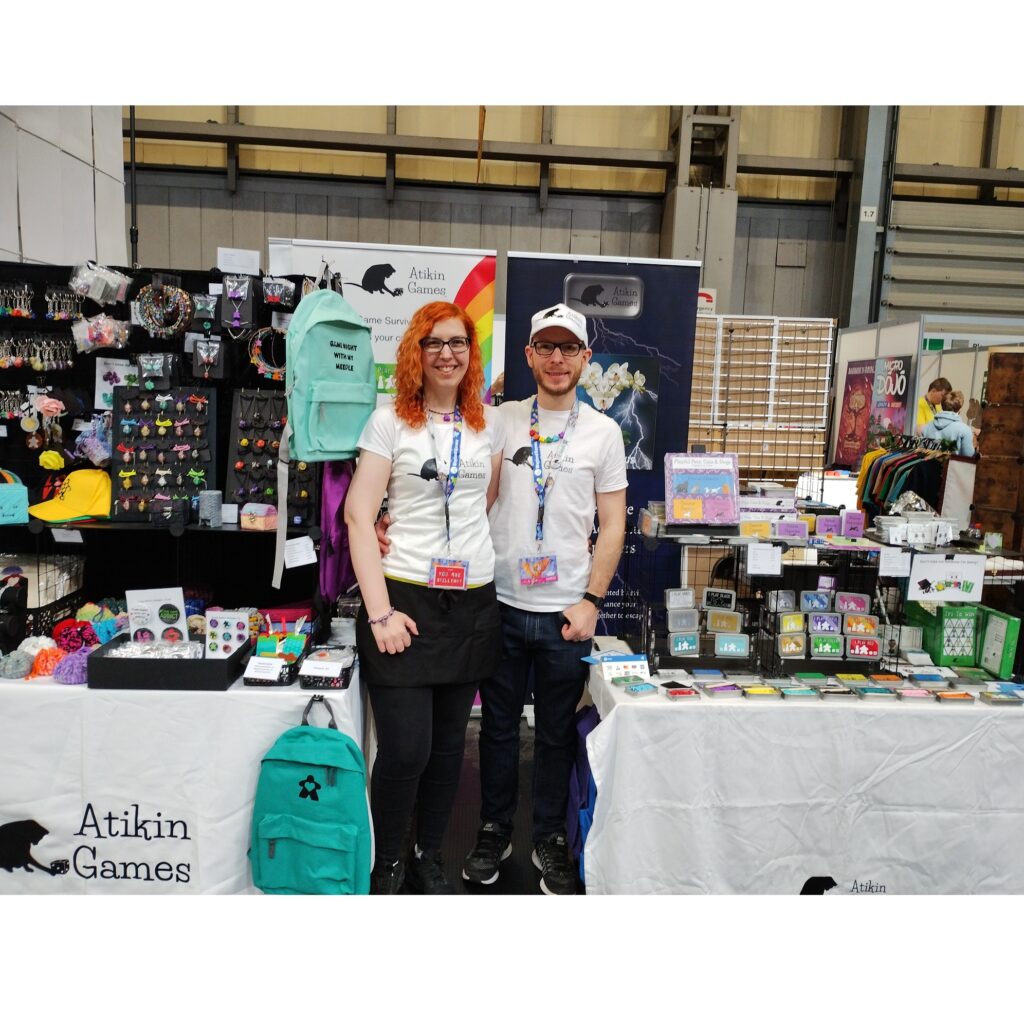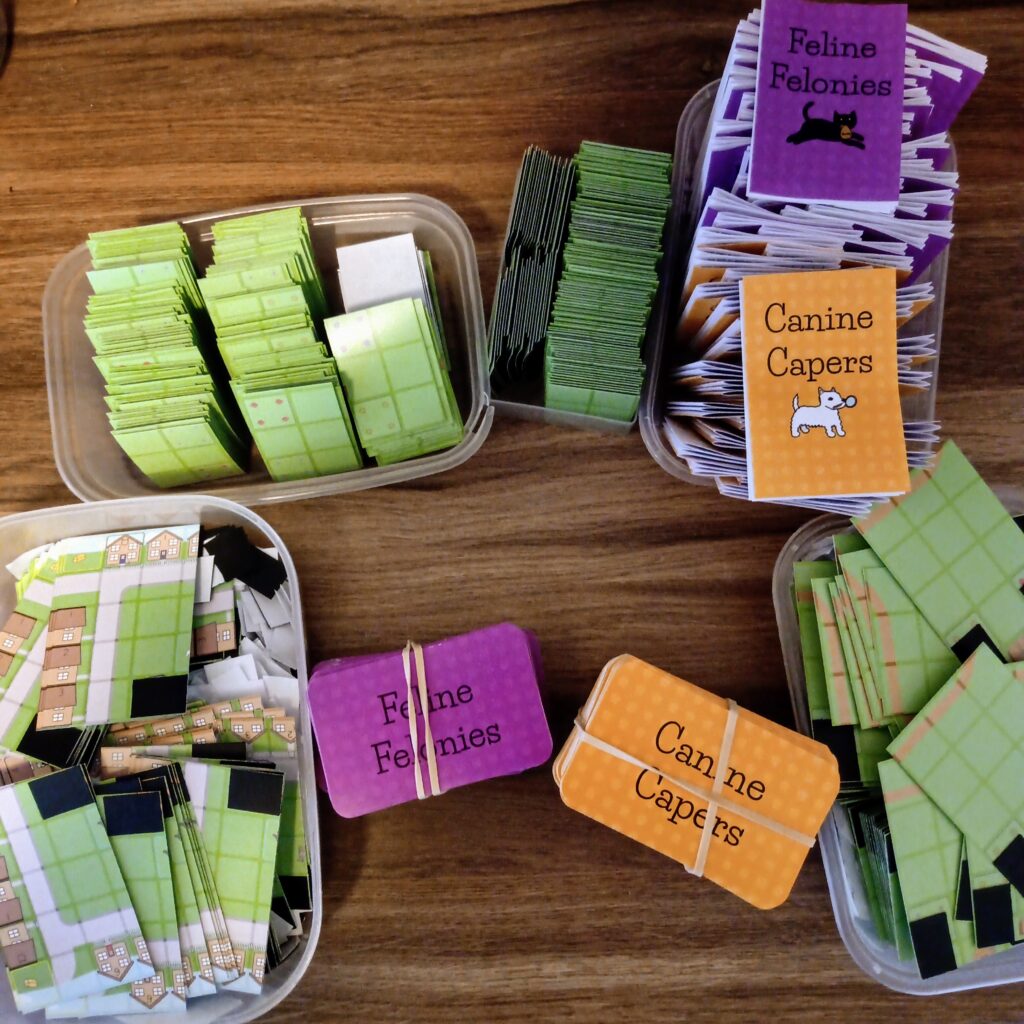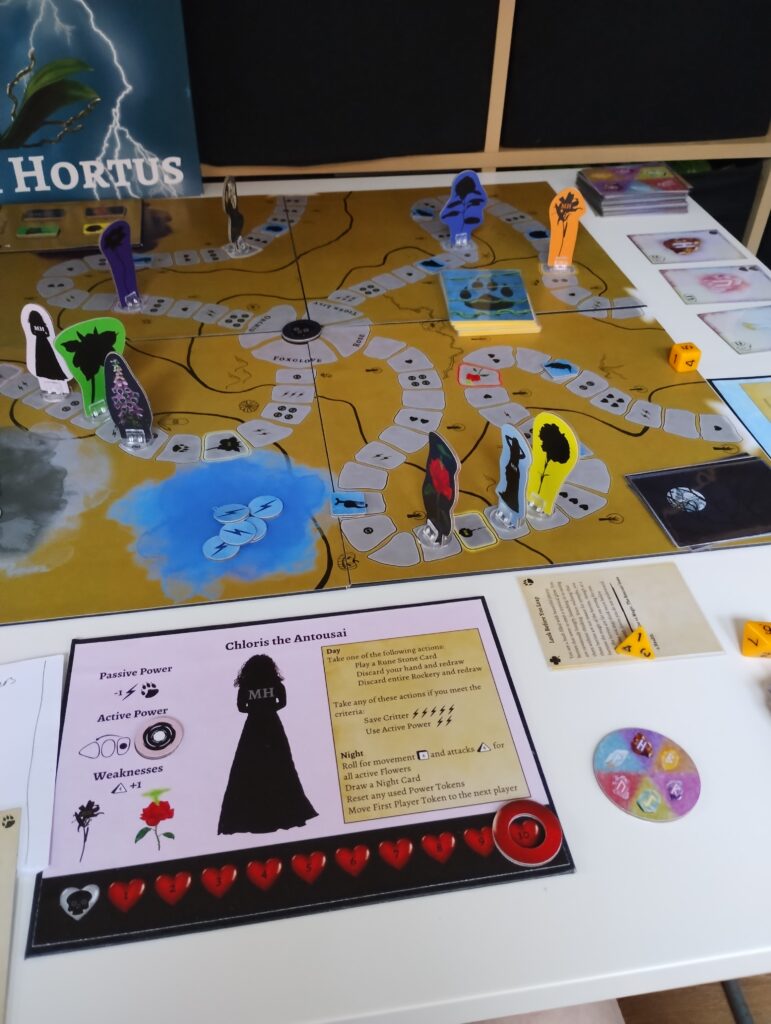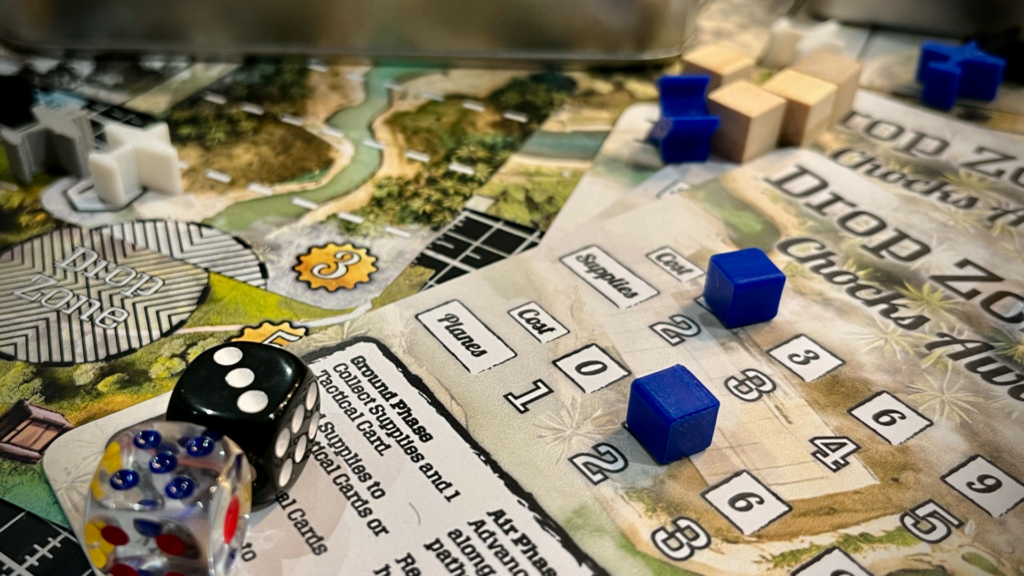
Hey you wonderful humans, you’re in for a treat today. A quite brilliant conversation with Nikita from Atikin Games. We’re exploring the manufacturing side of games production today. Read, enjoy and sign up to Nikita’s Tabletop Newsletter when you’re done here – link at the bottom. You can find Nikita on Instagram @atikingames
Joe: Hey Nikita, thanks for this conversation. I wonder if you could start by telling me a little bit about yourself and Atikin Games?
Nikita: Hi Joe, thank you for having me. My background is in Computer Science and Software Engineering, which is still very dear to me, and I still very much think of myself as a coder. My real passion, however, is tabletop gaming, so four and a half years ago, I started Atikin Games. I design, craft, publish and manufacture my own games – most of them by myself in the UK – as well as hand-crafting gaming accessories like The Board Game Survival Kit. I now have five published games with a sixth on the way.
I’d love to know a bit more about you, Joe. What’s been your board game journey so far?
Joe: This is my first year of being a ‘board game designer’. I’ve been playing and making games for years, but nothing board game related. Then a year ago, a board games café opened in my local town. I went along, and that’s where the design story starts. I met a few people who like both playing and making games, and that was that!
It sounds like you’re a very hands-on games designer if you’re also physically making the games too. What do you enjoy about the crafting process?
Nikita: I’ve always enjoyed crafting and making things by hand; weirdly, it’s what I love about coding, making something entirely from scratch. It was only once I pulled together all the crafting I do and gave it focus, on a theme – tabletop gaming – that everything really came together nicely and became a real job. There’s something really wonderful about creating something from a load of component parts; having something you’ve designed and built yourself gives a real sense of creative pride.
It was only once I pulled together all the crafting I do and gave it focus, on a theme – tabletop gaming – that everything really came together nicely
Joe: Beautifully said. I can while away hours on YouTube watching people create and build from scratch. There’s something powerful about something coming from nothing in front of your eyes. I think it’s why I’m also a big fan of a timelapse.
At the moment, the prototype versions of Drop Zone Chocks Away are all handmade, and I really love making them. Printing and cutting the cards, 3D printing the pieces, and finding a tin to put it all in. For a while, I wondered if I might actually run the crowdfunder without any mass market production. I felt like I wanted to keep things close to home instead of outsourcing. But the more I look at it, the harder and more challenging that feels – particularly in the amount of time needed to make a single game.
Nikita: It’s wonderful that you’ve been making your own prototypes; I think a lot of designers could learn quite a bit from trying to do it from scratch just once.
Joe: I wonder, what are the biggest challenges for you when you’re building up your games for sale?
Nikita: Time is a massive challenge, lumped in with knowing how much of each game to produce at any one time. Mini Memory Mischief is so teeny and takes up hardly any space, so I’ll sit and make a couple of hundred without any worry. With a bigger box game like Playful Pets: Cats & Dogs, it’s a lot more time investment to make a single game, and then how many to make at once? How much space and time do I give them? I could probably fit 20 Mini Memory Mischiefs in one Playful Pets box.

Have you thought about keeping yours handmade as a backup plan to scale from? (I keep my Kickstarter goals quite low by starting with the cost to make 100 from home with the plan to make 1000+ mass manufactured if enough is raised)
Joe: This is interesting and something I’ve been grappling with. I’m not sure what the market for my game would be if it was handmade – I also think the time needed might be too much to justify the approach. But on the other hand, using a manufacturer brings challenges like minimum order quantities of 500+, and I can’t work out how I’d ever get to those sorts of numbers! There’s also the challenge of how that might look on Kickstarter – what should I show, the handmade version or the mass-produced version? There are many interlocking and overlapping possibilities; it’s hard to get your head around!
Nikita: It’s certainly a lot to think about and decide on. For me, what to show on the Kickstarter is easy enough, as my prototypes are always handmade no matter where the production copies will be made.
Joe: Whilst I’ve been thinking about handmade and mass-produced games, I’ve been stumbling around in the world of safety testing for the UK and Europe. Have you had to explore that in the handcrafted games you’ve been creating?
Nikita: In terms of safety testing, I had it done on my first mass-produced game (Tri To Win), and I remember researching at the time and finding that having it done in the UK cost three times what it cost to have it done by a lab in China, coordinated with the manufacturer. UK testing is prohibitively expensive for me; for this reason, all of my handmade games list the age as 14+ with an explanation of why for parents. People have been fine with it so far.
Joe: You’re currently making that step from handmade to manufactured. Can you tell me a little bit about why you’ve decided now is the time? What’s changed in your designs/experience that moves you on this new path?
Nikita: It’s actually something I now consider for every project. Tri To Win was manufactured, and I didn’t think at any stage of making it myself. Mini Memory Mischief was handmade, and I didn’t consider mass manufacture at any point in its design or production. Since those first two, I always have two goals in mind. My initial Kickstarter goal is for what it would cost me to make a few hundred from home. If it achieves more success, then I have another number in mind for having it mass produced. Malus Hortus is a much bigger game than my previous ones, so although the initial goal will be for hand making it, it’s the first time I’m really hoping it will fund enough to have it manufactured in China. Otherwise, each game will be very costly in terms of time and effort to make by hand.

Joe: How are you planning for that mass market eventuality – particularly when you think about what you show to potential backers? I find it difficult to know what to show them – this version (homemade) or that version (manufactured at scale).
Nikita: Which version of the game to show is easy, as I only have the prototype handmade version. But in terms of where it could go and what it can be in future, I’m very upfront, open and honest with backers on all the projects I’ve done. I’ll make it clear that the initial goal is for handmade games. My video will show a high-quality handmade version of the game so they can see what they’re getting, and that mass manufacture is a possibility. I’ve always found massive support on Kickstarter, with backers posting on social media to help reach stretch goals in the past. I hope they’ll be equally supportive in helping to raise the money needed for mass manufacture. I don’t expect the look or quality of the game and its components to be much different between the two versions; it’s just that mass manufacture takes a lot off of my shoulders.
Joe: Thank you for your insight, Nikita. You also run a newsletter – can you tell me a little bit about it?
Nikita: I would love to! The Indie Tabletop Newsletter has been running for just over four years now. It’s a digest of news from a collection of Indie Tabletop designers from around the world. The original idea behind it was to all benefit from each other’s networks by sharing the latest news every month across social media. It’s a great way for anyone interested in independent games to catch up on what their favourite Indies are up to. It’s hosted on my website, so readers can catch up on past issues as well. It also includes a crowdfunding calendar showing which new Indie games are on the horizon.
Today I don’t want you to subscribe to my blog, but instead to the Indie Tabletop Newsletter. It’s a brilliant read that showcases indie games design from all over the work. Subscribe here. Nikita’s games can be found (to buy!!) on here website here, and you can support the prelaunch of Malus Hortus here.


